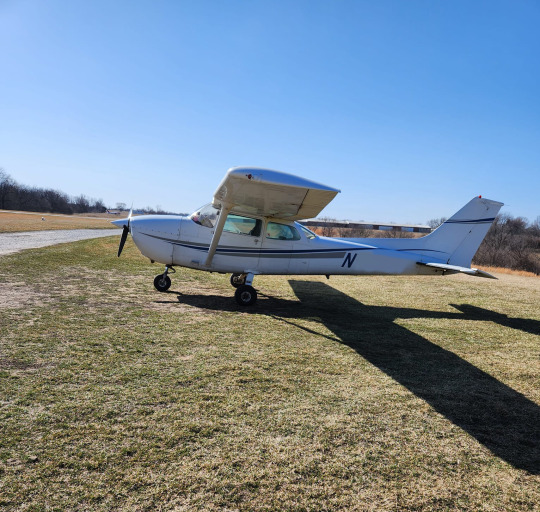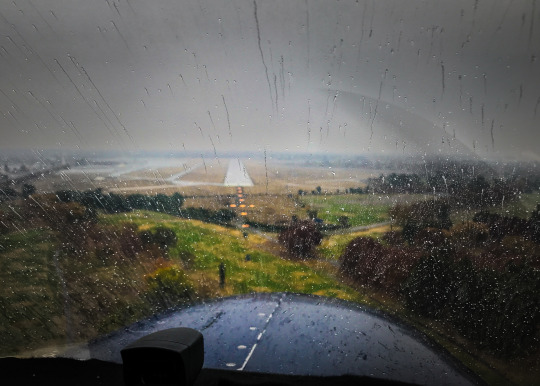#Aviation Weather
Explore tagged Tumblr posts
Text
Breaking Down METAR Codes: How to Read Aviation Weather Reports

Reading and understanding METAR codes is a critical skill for any pilot. A METAR is a coded weather report that provides a snapshot of the meteorological conditions at an airport or aerodrome. These reports are issued hourly and are essential for assessing the weather before taking off or landing. I remember the first time I had to decode a METAR—at first glance, it seemed like a jumble of letters and numbers. But once you get the hang of it, METARs become an invaluable tool in your pre-flight preparations. In this article, we’ll break down METAR codes and explain how to read them effectively.
Understanding the Basic Structure of a METAR
METARs follow a specific structure, with each part of the code providing important information about current weather conditions. A typical METAR might look something like this:
METAR KJFK 161853Z 28015KT 10SM FEW020 BKN050 08/05 A2992 RMK AO2 SLP134
At first glance, this might seem cryptic, but it can be easily broken down into digestible pieces. Each segment represents a different aspect of the weather, including the type of report, the location, time, wind, visibility, weather phenomena, temperature, and altimeter settings. Let’s break it down step by step.
METAR or SPECI: The Report Type
The first word in the report is either "METAR" or "SPECI."
METAR indicates a routine hourly weather report.
SPECI refers to a special weather report issued when there are significant changes in the weather, such as sudden drops in visibility or a rapid shift in wind direction.
In the example above, “METAR” tells us that this is a routine report. I’ve found that understanding whether the report is routine or special can be helpful, as a SPECI report often indicates that something significant has changed in the weather that might affect your flight.
Station Identifier: Knowing Where the Report Is From
Next, we have the station identifier, which is a four-letter ICAO code that indicates the airport where the METAR was issued. In our example, “KJFK” stands for John F. Kennedy International Airport in New York.
Each airport has its own unique ICAO code. It’s essential to know the codes for the airports you’re flying to and from, as this ensures you’re reading the correct weather report. If you’re unfamiliar with the codes, they’re easy to look up.
Date and Time: When the Report Was Issued
The next piece of information is the date and time when the report was issued. In the METAR example, "161853Z" tells us that the report was issued on the 16th day of the month at 18:53 UTC (Z stands for Zulu time, which is the same as UTC).
This timestamp is crucial because weather conditions can change quickly. As a pilot, I always make sure to check the time of the report to ensure I’m working with the most up-to-date information. If the report is more than an hour old, it might not reflect the current conditions.
Wind: Direction and Speed
The wind information comes next. In the example "28015KT," this tells us that the wind is coming from 280 degrees (west-northwest) at 15 knots.
Wind direction is given in degrees relative to true north, and the speed is in knots. If the wind were gusting, the report might include something like "G25," indicating gusts up to 25 knots. Knowing the wind direction and speed is critical for takeoffs and landings, as strong or gusty winds can affect flight safety.
Visibility: How Far You Can See
Visibility is a key component in any weather report, especially for landing. In our example, "10SM" means the visibility is 10 statute miles.
If visibility were lower, the report might include values like "5SM" (five statute miles) or even less. Reduced visibility can indicate fog, rain, snow, or other weather phenomena that could impact a pilot's ability to see the runway or other aircraft. Personally, if I see visibility drop below 3 miles, I start thinking about whether I’ll need to rely on instrument approaches.
Cloud Cover and Altitude
Cloud cover is an important part of any METAR, as it tells you the amount of sky covered by clouds and at what altitude. In the example "FEW020 BKN050," we learn that there are a few clouds at 2,000 feet (FEW020) and broken clouds at 5,000 feet (BKN050).
The abbreviations for cloud cover are:
FEW: Few clouds (1/8 to 2/8 coverage)
SCT: Scattered clouds (3/8 to 4/8 coverage)
BKN: Broken clouds (5/8 to 7/8 coverage)
OVC: Overcast (8/8 coverage)
Knowing the cloud levels is vital for determining whether you can fly under visual flight rules (VFR) or need to switch to instrument flight rules (IFR). Low cloud layers can limit visibility, and in certain conditions, flying through clouds requires special training and equipment.
Temperature and Dew Point
Temperature and dew point are reported next, in degrees Celsius. In our example, "08/05" indicates a temperature of 8°C and a dew point of 5°C.
The dew point is the temperature at which the air becomes fully saturated, leading to the formation of fog, clouds, or precipitation. When the temperature and dew point are close together, it can signal potential fog or low-visibility conditions. As a pilot, I always take note of these values, especially in the morning or evening when fog is more likely to form.
Altimeter Setting: Setting Your Instruments
The altimeter setting is a critical part of the METAR, as it tells pilots what to set their altimeter to for accurate altitude readings. In the example "A2992," this indicates an altimeter setting of 29.92 inches of mercury.
Setting your altimeter correctly ensures that your altitude readings are accurate, which is especially important when flying into or out of an airport. Incorrect settings can lead to altitude discrepancies, potentially creating hazardous conditions, especially in low visibility or near mountainous terrain.
Remarks Section: Additional Information
Finally, the remarks section of the METAR provides additional information. In the example "RMK AO2 SLP134," we learn that the weather station is automated with a precipitation sensor (AO2), and the sea-level pressure is 1013.4 mb (SLP134).
Other remarks might include information about recent weather phenomena, such as thunderstorms or wind shifts. It’s always worth checking this section for any extra details that could impact your flight.
Key Components of METAR Codes
Report Type: METAR (routine) or SPECI (special)
Station Identifier: Airport ICAO code
Time and Date: Report issuance in UTC
Wind: Direction and speed in knots
Visibility: Measured in statute miles
Cloud Cover: Few, scattered, broken, or overcast, with altitude
Temperature/Dew Point: Measured in Celsius
Altimeter Setting: In inches of mercury
Conclusion: Decoding METARs for Safe Flight Operations
Reading and interpreting METAR codes is a fundamental skill that every pilot must master. These reports provide a concise summary of current weather conditions, from wind and visibility to cloud cover and altimeter settings. Whether you’re flying VFR on a clear day or navigating through IFR conditions, understanding METARs helps you make informed decisions about your flight.
Over time, decoding these weather reports becomes second nature. It’s an essential tool in ensuring safe flight operations, allowing pilots to adapt to weather conditions and plan accordingly. As you continue your flying journey, keep practicing reading METARs—it’s a skill that will serve you well every time you take to the skies.
0 notes
Text
Fixing the AWC URL on older MetarMaps
My CFI asked me if I could get the school’s METARmaps display board working again as it stopped working once the Aviation Weather site migrated to the new platform. There were many threads on the topic including an official post from METARmaps offering a paid upgrade to fix the problem without any instructions on how to fix it yourself. This is probably a good option for many, but I’ll throw a…

View On WordPress
#AIRMET#Aviation Weather#AviationWeather.gov#IFR#IMC#KLKU#LIFR#METAR#METARmaps#PIREP#Raspberry Pi#SIGMET#VFR
0 notes
Text






Bit chilly outside ain’t it?
#sniper not faring well in cold weather my beloved#I bet he always forgets when winter hits and just. stubbornly refuses to change his clothes#maybe he adds a scarf or something#anyways take some cute american aviators#tf2#team fortress 2#tf2 sniper#tf2 soldier#american aviators#snipersoldier#art#tf2 fanart#squishart
666 notes
·
View notes
Text
This is very specific, but I wanted to point this out anyway. Project 2025 wants to get rid of A & P mechanics. That’s airframe and power plant mechanics. That’s all that means and project 2025 explicitly wants to get rid of them. They are the reason it’s safe to get on an airplane. Project 2025 also does not provide an alternative to who they think should be repairing airplanes and doing annual and 100 hour inspections on them.
As a pilot I can also tell you all the aviation weather data we use to determine if a route is safe, is from the National Weather Service. Which Project 2025 would like to eliminate. A Trump presidency quite possibly means safe air travel in America would be a thing of the past.
#kamala harris#us politics#tim walz#vote kamala#vote blue#donald trump#harris walz 2024#anti trump#2024 elections#vote blue to save democracy#aviation#pilot#aircraft mechanic#mechanic#weather#national weather service#aviation safety#airplanes#travel#project 2025#anti project 2025#heritage foundation#anti heritage foundation
51 notes
·
View notes
Text


WB-57C,RB-57D Canberra
@Headdancer7 via X
#b 57 canberra#martin aviation#weather#flight recearch center#aircraft#usaf#nasa#aviation#cold war aircraft
21 notes
·
View notes
Text

#ytelovski#mine#photography#original photographers#photographers on tumblr#original content#aesthetic#aviation#aviation photography#fire#bushfire#smoke#smoke aesthetic#summer aesthetic#summer days#summer#hot weather#hot summer#scorching#nature#nikon#adobe lightroom#nature art#art#aviation art#fine art#orange sky#golden hour#silhouette#lensblr
23 notes
·
View notes
Text



my friend has an embroidery machine, so i got them to run off some patches for one of my fave jackets! dropping in the Motherlobe apparel store 1982 never
#psychonauts#really happy with how these came out!#the back patch is a little scuffed but i kinda like the weathered look#i am not immune to fluffy aviator collars.
211 notes
·
View notes
Text

Storm moving into IAH
#IAH#ramp#apron#airport#George Bush Intercontinental Airport#storm#lightning#weather#rain#photography#aviation#monsoon#storm clouds#stormy weather#Thunderstorm
10 notes
·
View notes
Text
A podcast I liked to listen to just posted an episode to announce that the presenter had died and I’m genuinely really sad about it.
#it was the only ‘conspiracy’ podcast I listened to by people who actually believe in that stuff#a lot of it was ghosts and aliens not ‘government secrets!!!!’#and he was really carefully to avoid the antisemitic shit.#like… he’d had David Icke on years and years ago and then clearly realised he was A Problem and never had him on again#he didn’t engage in any Covid bullshit.#and also he just had a really amazing radio voice#and idk like… I just liked hearing him tell me what the weather was like in my home country#I listened to the ghost episodes bc I will always be a sucker for ghost stories#and others bc they were - unintentionally - fucking hilarious to me#but I doubt I’d have bothered if he wasn’t just… such a kind person.#:(#there’s probably fewer people on this site that listened to The Unexplained than listened to ONRAC#but it was Howard Hughes.#and obviously his name is completely overshadowed by the aviator and movie guy.
6 notes
·
View notes
Text

Saw my wife today!
#kai flies#aviation#I did fine despite a two month lapse LSDKIFJSDF weather and financials were bad#I did okay ! Might have pissed off a few homeowners with one really low approaches oopsies!
7 notes
·
View notes
Text

Another build another going fucking insane with oil paints
#aviation#scale modelling#planes#plamo#model aircraft#model airplane#scalemodel#brush painted#airfix#hawker hurricane#weathering#oil paints my beloved
5 notes
·
View notes
Text
uggghhh i’m trying to use deviantart again and i’m having to block sooo many people who create adoptables with AI and post them in all the tags. i hate that people are even making adopts with ai programs and selling them 😡 like i’m 98% against AI in general but 1000% against using it for this kind of garbage
#my fault for using deviantart honestly#i like ai that helps with weather predictions and aviation and similar life saving applications
8 notes
·
View notes
Text

If you're not slipp'n you're slide'n
4 notes
·
View notes
Text
Effervescent Spirit
Anne Lamont once, in a commencement speech, referred to laughter as “carbonated holiness” and that thought has stuck in my consciousness…When we think of carbonation, our thoughts, more aptly, are of the effervescence we witness when a trapped gas escapes solution, but that is merely the release. The reality is, more so, that the nature of a thing is so embedded in our world that we don’t…

View On WordPress
6 notes
·
View notes
Text



Have this old picture book on introductory weather studies for pilots printed by the FAA back in 1959. I'm in love with the hand painted diagrams. I believe I remember seeing many of these illustrations in some current modern pilot textbooks. Unfortunately the artist isn't named in this book. Gonna have to do some digging to try and find em, I wonder how much more of this person's art I grew up admiring and learning from. :3
More illustrations from this little picture book. Just phone camera shots rn. In the near future I'd like to digitally preserve it.





6 notes
·
View notes
Text

The Flight of the Intruder
@MAC_VSOG via X
#a 6 intruder#grumman aviation#bomber all weather#aircraft#navy#aviation#us navy#vietnam war#cold war aircraft#gulf war aircraft
21 notes
·
View notes